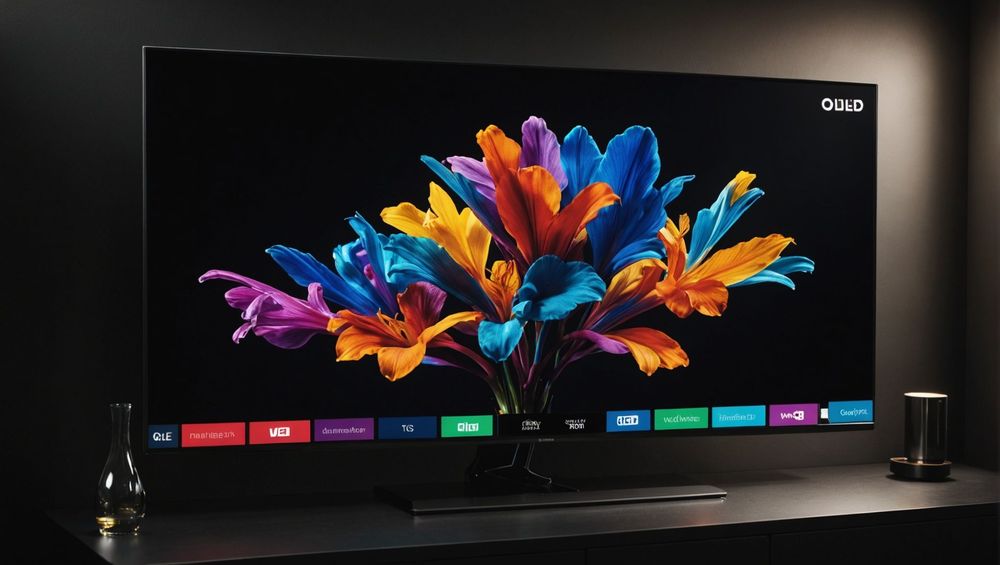Understanding the Differences Between QLED and OLED TVs
When it comes to choosing a new television, two popular technologies often come to the forefront: QLED and OLED. While both display technologies offer impressive picture quality and vibrant colors, they differ significantly in their construction, performance, and viewing experience. In this article, we will delve into the distinctive features of QLED and OLED TVs, helping you understand which might be the right choice for your viewing needs.
What is QLED Technology?

QLED, or Quantum Dot LED, is a display technology developed by Samsung that enhances LED-backlit displays using quantum dots. These microscopic semiconductor particles emit their own colored light when exposed to a light source, allowing QLED TVs to produce brighter images and a wider color gamut compared to standard LED TVs. The innovative use of quantum dot technology is designed to optimize color accuracy and brightness, making QLED TVs particularly strong in well-lit environments. Furthermore, QLED panels can achieve high brightness levels, making them ideal for daytime viewing. The technology’s resilience against burn-in makes it suitable for varied content, from movies to video games. Overall, QLED offers a high-performance option with exceptional picture quality for bright rooms.
Exploring OLED Technology

OLED, or Organic Light Emitting Diode, represents a fundamentally different approach to display technology. Unlike QLED, OLED panels do not rely on backlighting; instead, each pixel emits its own light. This allows for true blacks, as individual pixels can turn off completely, resulting in an unmatched contrast ratio. Additionally, OLED technology facilitates a thinner and more flexible panel design, enhancing the aesthetic appeal of modern televisions. The wide viewing angles provided by OLED displays ensure minimal color distortion, making them great for group viewings. However, OLED TVs may be prone to burn-in from static images if not used with care. The vibrant colors and deep contrasts of OLED make it a strong contender for movie lovers and anyone who appreciates high-fidelity visuals.
Key Differences Between QLED and OLED
To better comprehend the differences between QLED and OLED technologies, it’s beneficial to summarize their contrasting features. Below is a concise list breaking down the primary distinctions:
- Brightness: QLED TVs excel in brightness compared to OLED, making them preferable for rooms with ample natural light.
- Black Levels: OLED technologies provide superior black levels thanks to individual pixel control, while QLED TVs may struggle with achieving true blacks.
- Viewing Angles: OLED TVs typically offer better viewing angles, maintaining color accuracy from various positions in the room.
- Burn-In Risk: QLED is less susceptible to burn-in issues than OLED, making it a safer option for static content.
- Price: Generally, OLED TVs tend to be more expensive than QLED models due to their manufacturing process and superior technology.
Performance in Different Environments

The performance of QLED and OLED TVs varies significantly based on environmental conditions. QLED TVs shine in brightly lit rooms; their high brightness levels render images vivid even in daylight. Outdoor viewing is often more suited to QLED, particularly for sports and action-packed programming. Conversely, OLED TVs excel in controlled lighting conditions, where their ability to display deep blacks and rich colors truly comes alive. Homes with dim lighting enhance the viewing experience of OLED displays. When determining which TV type suits your environment, consider the room’s natural light and your typical viewing habits. Taking into account these factors will help maximize the visual impact of your next television purchase.
Which One Should You Choose?
Ultimately, the choice between QLED and OLED comes down to personal preference and specific usage scenarios. If you frequently watch television in a bright environment, enjoy gaming, or want to avoid burn-in concerns, a QLED TV might be the right fit. Alternatively, if you prioritize cinematic experiences with striking visuals and deep contrasts, a high-quality OLED TV would likely meet your needs. It’s also important to consider your budget, as OLED technology generally comes with a higher price tag for equivalent screen sizes and features. Reviewing these aspects will allow you to make an informed decision catered to your preferences and lifestyle when selecting a new television.
Conclusion
In summary, QLED and OLED technologies each offer unique advantages that cater to different viewing preferences and requirements. While QLED excels in brightness and is resilient against burn-in, OLED provides exceptional contrast and color fidelity. Deciding between these two options ultimately depends on your viewing environment, content preferences, and budgetary constraints. Regardless of your choice, both technologies promise an immersive and enjoyable viewing experience, underscoring the progress made in modern television displays.
FAQs
1. Are QLED TVs better for bright rooms?
Yes, QLED TVs are designed to excel in well-lit environments due to their high brightness levels and vibrant colors, making them ideal for daytime viewing.
2. Do OLED TVs get burn-in easily?
Yes, OLED TVs can be susceptible to burn-in if static images are displayed for prolonged periods. It is advisable to varied content to mitigate this risk.
3. Which offers better black levels: QLED or OLED?
OLED TVs provide better black levels because they can turn off individual pixels, achieving true blacks compared to QLEDs, which rely on backlighting.
4. Is one technology more expensive than the other?
Generally, OLED TVs tend to be more expensive than QLED TVs, primarily due to their complex manufacturing processes and better performance in certain aspects.
5. Can QLED TVs match the color accuracy of OLED TVs?
While QLED TVs have improved color accuracy through quantum dot technology, OLED TVs still typically achieve superior color fidelity due to their self-emissive nature.